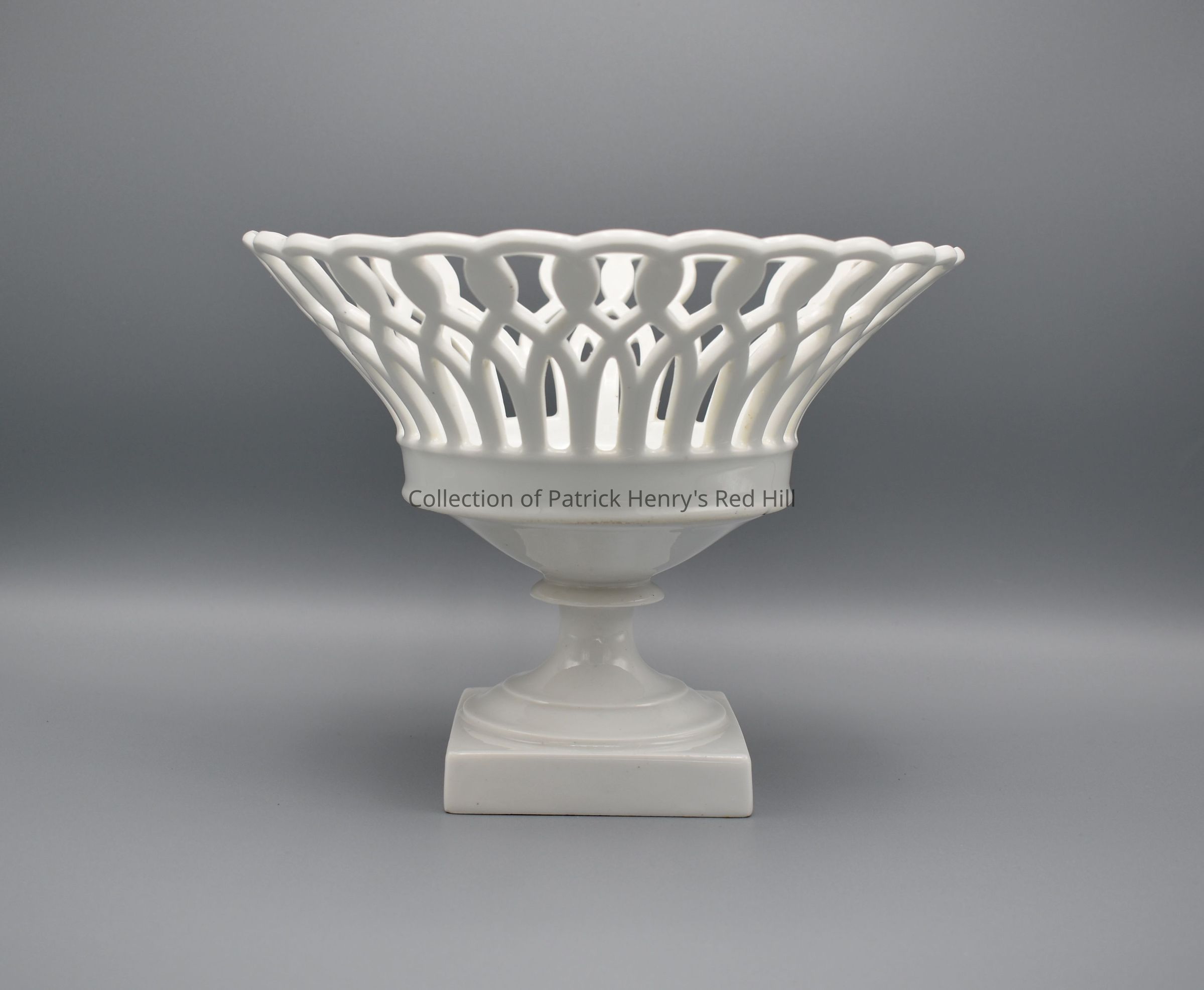Notes
This reticulated compote bowl was one of two purchased as keepsakes by Elvira McClelland Henry (1808–1875) out of the proceeds of some lemons raised in the orangery at Red Hill. The matching compote was broken, but this one remained in excellent condition. Unlike a compote bowl, which was made to hold the liquid dessert of fruit chunks in a sugary syrup, a reticulated compote was made to display fruit in. They were also called by the French term "corbeille à fruits" or "fruit basket."
This compote may have been made by the factory of William Ellis Tucker, the first person to successfully produce hard paste porcelain for the home market, made entirely in the United States of purely domestic materials. Tucker established the first hard paste porcelain factory in the US, in Philadelphia, in 1826. Tucker formed a partnership with potter Thomas Hulme in 1828. In 1831, Tucker formed a second partnership with Alexander Hemphill. After Tucker died in 1832, the firm was joined by Hemphill's father (Judge Joseph Hemphill) and brother (Thomas Hemphill). The factory continued production under the Hemphill name until it closed in 1838.
The compote appears in John Henry's (1796–1868) estate inventory, taken at Red Hill after his death in 1868. It stood in the dining room closet as one of the "fruit stands" in the listing, "5 Dishes, Fruit stands, Butter bolt. etc".
At an estate sale of John's possessions on February 12, 1868, his son, Dr. Thomas Stanhope Henry (1833–1912), purchased the compote and other dishes for $5.00. Dr. Henry later gave the bowl to his daughter, Mary Henry Clay. The compote passed from Mrs. Clay to her cousin, Katherine Smith.
Katherine Smith was not a direct descendant of Patrick Henry. However, she was connected to the family by marriage and remained interested in Patrick Henry. She was one of the first board members for the Patrick Henry Memorial Foundation. Mrs. Smith gave the bowl to PHMF on June 28, 1952.
